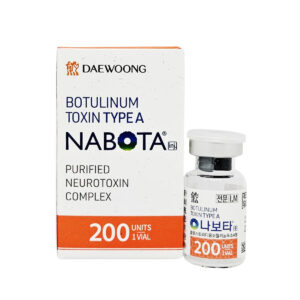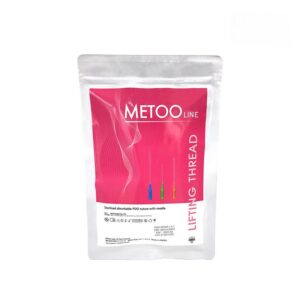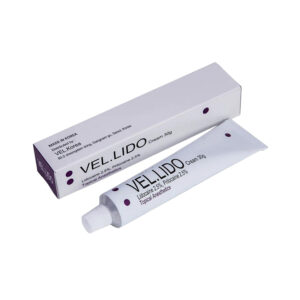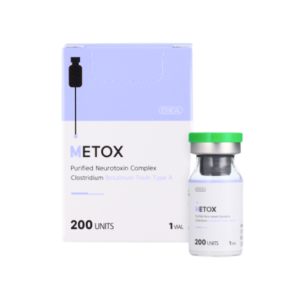No products in the cart.
Need help? Write to us support@fillersfairy.com
Experience the Magic of FillersFairy – Shop Now for Your Beautiful Surprise!
- DERMAL FILLER
- BODY FILLER
- SKIN BOOSTER
- NCTF 135HA
- DIVA EYE PN
- DIVA FACE PN
- AMI NAD+
- NadReju
- Miracle Touch BR
- Miracle Touch Up
- Regenovue Aqua Shine Plus
- Vitaran i
- Vitaran i 2
- Hyalace
- Elaxen PN
- PuriColl
- Rejeunesse Sparkle
- ASCE+ IRLV
- AestheFill
- AETER PURI EYES
- Ami Eyes
- Aqua Exosome
- ASCE Plus SRLV
- Celosome Aqua
- Curenex Glow
- Cytocare
- Exo-one
- High Inj
- Hyaron
- Juvederm Skinvive
- Kiara Reju
- Lapuroon
- Miracle
- Puri Hilo PN
- Puri Pdrn
- Purilips
- Rejuran
- Revitrane HA20
- Richesse Collafio
- Save B32
- Save B32SP
- BOTULINUM TOXIN
- FAT DISSOLVING
- HAIR TREATMENT
- IV THERAPY
- NUMBING CREAM
- PLLA/PCL/CA+
- CONSUMABLES
- THREAD
- AESTHETIC COSMETICS
- PEELING
Сall our consultants or Chat Online
+1(912)5047648
- DERMAL FILLER
- BODY FILLER
- SKIN BOOSTER
- NCTF 135HA
- DIVA EYE PN
- DIVA FACE PN
- AMI NAD+
- NadReju
- Miracle Touch BR
- Miracle Touch Up
- Regenovue Aqua Shine Plus
- Vitaran i
- Vitaran i 2
- Hyalace
- Elaxen PN
- PuriColl
- Rejeunesse Sparkle
- ASCE+ IRLV
- AestheFill
- AETER PURI EYES
- Ami Eyes
- Aqua Exosome
- ASCE Plus SRLV
- Celosome Aqua
- Curenex Glow
- Cytocare
- Exo-one
- High Inj
- Hyaron
- Juvederm Skinvive
- Kiara Reju
- Lapuroon
- Miracle
- Puri Hilo PN
- Puri Pdrn
- Purilips
- Rejuran
- Revitrane HA20
- Richesse Collafio
- Save B32
- Save B32SP
- BOTULINUM TOXIN
- FAT DISSOLVING
- HAIR TREATMENT
- IV THERAPY
- NUMBING CREAM
- PLLA/PCL/CA+
- CONSUMABLES
- THREAD
- AESTHETIC COSMETICS
- PEELING
Layer Rejeunesse fillers with vitamin C serum by waiting 24-48 hours post-injection for incision healing, then applying 10-15% L-ascorbic acid serum nightly. VC’s antioxidants reduce post-treatment redness and boost collagen—studies note 12% extra firmness at 12 weeks when combined, enhancing both immediate plump and long-term tone.
Table of Contents
ToggleDetailed Layered Application Steps
The average thickness of the stratum corneum in Asian skin is about 0.01 mm, making it very sensitive to the “window period” for product absorption. Research shows that incorrect product order can reduce the absorption efficiency of active ingredients by up to 30%, equivalent to wasting one bottle out of every three serums.
Basic Cleansing and pH Preparation
Data shows that improper cleansing can cause an instantaneous decrease in skin barrier function of over 15% and prevent nearly one-third of subsequent active ingredients from penetrating effectively.
Water Temperature: 35°C is the Threshold, Even One Second Overheated is Too Much
Water that feels “slightly warm” to the skin on the inside of your wrist is roughly 35°C. This temperature is just right; it effectively softens sebum (melting point around 30-33°C) and solidified keratin plugs without overstimulating the skin.
When the water temperature exceeds 42°C, things change. High temperatures act like a strong degreaser, instantly washing away the skin’s sebum film. This natural barrier, composed of ceramides, cholesterol, and free fatty acids in an optimal molar ratio approximating 1:1:1, once destroyed, takes at least 40-60 minutes to begin self-repair. More critically, high temperatures can trigger a transient inflammatory response within the skin, activating TRPV1 (capsaicin receptor) channels. Even if gentle products are applied afterward, the probability of stinging increases by about 20%.
Laboratory comparison data confirms this: after washing with 35°C water, the average Transepidermal Water Loss (TEWL) value increases by 5%; after using 42°C water, the TEWL value soars by 18%, proving significant compromise in the barrier’s water-locking function.
Cleanser pH Value: Between 5.5 and 9.0 Lies a Skincare Watershed
The average pH on the surface of healthy skin is maintained in a weakly acidic environment of 4.5-5.5. This microenvironment is a paradise for beneficial flora (like Staphylococcus epidermidis) and a no-go zone for harmful bacteria (like Staphylococcus aureus).
If the cleanser you use has a pH as high as 9.0-10.0 (common in soap-based formulas), instantly after washing, the skin’s surface pH is forcibly raised to 7.5-8.0. The skin must expend significant energy, using its “buffering system” to secrete substances like lactic acid and fatty acids, to slowly return to the normal pH. This process takes about 20 minutes in young, healthy skin, but in those over 30 or with sensitive skin, it may take over 40 minutes.
During this long recovery period, your skin is in a state of “alkaline stress”: the intercellular lipids (the “mortar” between the “bricks” of corneocytes) in the stratum corneum become loosely arranged, and the barrier’s defensive capability is at its lowest point. If an acidic Vitamin C serum with a pH around 3.0-3.5 is applied immediately at this time, it’s like adding a chemical irritant to an already compromised barrier, directly increasing the risk of sensitivity by 3 times.
Therefore, be sure to choose weakly acidic or neutral amino acid-based cleansers with a labeled pH between 5.0-6.5. A simple test: dissolve the cleanser in water, test with pH paper, and compare the color to the standard chart. Falling in the yellow-green region (pH 5-6) is ideal.
Drying Action: The Friction from a Towel Can Instantly Thicken the Stratum Corneum by 5%
After washing, the water content of the stratum corneum can instantly reach over 30%. The cells are swollen and soft like water-soaked sponges, and physical defense is at its weakest. Rubbing with a towel at this time causes several times more damage to the stratum corneum than in a dry state.
Data from friction testing instruments shows that rubbing the face back and forth 10 times with a cotton towel at a frequency of 2 times per second generates enough shear force to partially remove the outermost 5-10 layers of corneocytes and cause an instantaneous increase in the overall thickness of the stratum corneum by about 5% due to physical compression.
The most scientific method is: use a disposable facial towel or a very soft pure cotton towel, adopting the “Press-Absorb” method. Cover the face with the towel, gently press each area for 3-5 seconds, using the capillary action of the cotton fibers to absorb the water. Throughout this process, the contact pressure between the towel and the skin should be controlled below 0.1 N/cm² (approximately the pressure of a coin resting on your hand). This action can reduce the physical friction damage from cleansing to almost zero.
Fine-Tuning Parameters for Different Skin Types
- Oily Skin (Sebum Secretion > 250μg/cm²/3 hours): In summers with humidity over 80%, a mild soap-based cleanser with a pH of 5.5-6.0 can be used on the T-zone, with contact time strictly limited to 15 seconds, while the cheeks still use an amino acid cleanser. This mixed method should not be used more than 3 times per week.
- Dry/Sensitive Skin (Sebum Secretion < 100μg/cm²/3 hours): In air-conditioned rooms or winter with humidity below 30%, try the “No-Rinse Cleansing Method”: apply 2 pumps of a low-foam cleansing milk directly to the dry face, massage for 20 seconds, emulsify with wet hands, and rinse with the minimum amount of water. This method maximizes the retention of natural sebum.
After completing this set of cleansing preparation, which takes about 1 minute but where every detail is quantified, your skin is in a “standby state” with balanced pH, an intact barrier, and optimal permeability, laying an almost perfect foundation for the penetration of highly active serums.
Precise Application of Vitamin C Serum
Laboratory data indicates that the activity of a bottle of L-Ascorbic Acid serum may degrade by over 20% by day 30 after opening. And an incorrect application technique can reduce the effective absorption rate of that use by another 30%. The high cost you pay may result in an actual utilization rate of less than half.
Dosage: 4-5 Drops is the Calculated Saturation Dose; One More Drop is Waste, One Less is Ineffective
The average surface area of facial skin is about 600 square centimeters. Research shows that to achieve an effective antioxidant concentration, each square centimeter of skin needs about 2.5 micrograms of L-Ascorbic Acid. For a serum with a concentration of 15%, after calculating delivery losses, 4-5 drops (approximately 0.8 ml) is the “saturation dose” for covering the entire face and neck.
Insufficient dosage (e.g., only 2 drops) leaves gaps in the protective network. Some areas of skin cells won’t receive a sufficient concentration of Vitamin C, and their efficiency in combating free radical damage caused by UV rays can plummet from the expected 95% to below 60%. Excessive dosage (e.g., using 1.5 ml) far exceeds the skin’s short-term absorption “saturation point.” The excess serum forms a high-concentration acidic film on the epidermis, not only wasting product but also increasing the risk of irritation by about 15%, and significantly increases the likelihood of pilling with subsequent products. After dispensing, drop the serum onto your fingertips first, not your palm, to reduce pre-oxidation and loss due to temperature on the contact surface.
Zoned Application: The T-zone Has 3 Times More Sebaceous Glands Than the U-zone and Needs Focused Attention
The distribution density of sebaceous glands varies greatly across the face. The density on the forehead and nose (T-zone) is as high as 400-900 per square centimeter, while on the cheeks (U-zone) it’s only 100-200 per square centimeter.
Therefore, the order of application must be strategic. First, apply half of the serum amount specifically to the T-zone, as this area has the greatest oxidative stress from oil and needs the most antioxidant protection. Then, dot the remaining serum onto the U-zone. This “difficult first, easy later” sequence ensures that the most challenging area to penetrate is tackled first while the serum is at its peak activity. In environments with humidity below 50%, you can spray the face with thermal water for 3 seconds before applying the serum, instantly raising the ambient humidity to over 70%. This action can increase stratum corneum hydration by 10% within 30 seconds, creating a more open hydrated channel for Vitamin C.
Application Technique: One-Direction Massage at 2 Circles Per Second, Pressure Controlled at 0.3 Newtons
L-Ascorbic Acid molecules rely on the concentration gradient to passively diffuse through the “gaps” in the intercellular lipid bilayer. Rough rubbing can disrupt the orderly arrangement of the lipid bilayer, creating a penetration barrier instead.
The correct technique is: use the ring finger (lightest pressure, about 0.2-0.3 Newtons of pressure) pad to spread the dotted serum evenly in a single direction (usually downward, following the pore opening direction or skin texture) at a rate of 1-2 circles per second. The entire process should be completed within 20-30 seconds. Avoid rubbing back and forth or slapping vigorously. Laboratory infrared imaging shows that with unidirectional application, the temperature distribution and blood flow on the skin surface are more uniform, aiding the stable and synchronous penetration of active ingredients. After application, gently cup your palms over your face for 5-10 seconds. The temperature of the palms (about 34°C) can slightly increase skin blood flow speed by about 5% and help the serum spread into a uniform film.
The Golden 90-Second Waiting Period: The Critical Point Where Stratum Corneum Hydration Drops from a Peak of 30% to 20%
After applying the serum, the stratum corneum on the skin surface instantly absorbs water, and its hydration level can surge from the normal 10%-15% to over 30%. At this point, the intercellular spaces are temporarily enlarged by water molecules. However, as the water evaporates, the hydration level gradually decreases.
This 90-second waiting period is essentially waiting for the hydration level to drop to an optimal penetration critical point—approximately 20%. At this humidity level, the cell gaps remain relatively “open” yet have regained sufficient “resilience” to efficiently accept subsequent products without rejection. A skin moisture meter can precisely monitor this process: when the value drops by about 30%-40% from the peak, it is the optimal time for layering. If you skip the wait and immediately apply Rejeunesse while the water content is still above 25%, the ingredients of the two products can easily mix and congeal in the overly wet environment, causing pilling and reducing the film-forming effect of certain large-molecular polymers in Rejeunesse by over 50%.
Rejeunesse Serum
The Vitamin C serum builds the defensive foundation, while comprehensive anti-aging serums like Rejeunesse take on the task of active repair. The peptides, growth factors, or rare botanical extracts in their formulas often have larger molecular weights and target deeper layers—not just the stratum corneum, but also the deep epidermis and even the superficial dermis.
Research shows that simple application without massage assistance results in an epidermal retention rate of only 40%-50% for large molecular active ingredients, with most being metabolized outside the stratum corneum. A precise massage lasting 2 minutes can increase local blood flow by up to 20% and raise skin temperature by 0.5-1°C. This not only significantly increases the penetration pressure of the ingredients but can also push the utilization rate of effective ingredients to over 85%.
Dosage Control: The Critical Point of 2-3 Pumps; One More Pump Clogs Pores, One Less is Ineffective
Rejeunesse serums are usually richer in texture, requiring more precise dosing than watery Vitamin C serums. 2 to 3 pumps (approx. 1.0-1.2 ml) is the ideal median value for covering the entire face and neck. This dosage is calculated based on the effective concentration of common active ingredients (like Acetyl Hexapeptide-8) and the permeability of the formula base.
Insufficient dosage (below 0.8 ml) results in inadequate distribution density of active ingredients, preventing the formation of a continuous repair network. The signal strength for promoting collagen synthesis can decay by over 60%. Excessive dosage (over 1.5 ml) causes over-hydration of the stratum corneum (humidity >95%). The high molecular weight polymers and thickeners in the cream cannot be fully absorbed, forming a sticky film on the skin surface. This not only hinders the penetration of subsequent moisturizers but also increases the probability of pore clogging (causing acne) by about 25%. In summer with humidity over 75% or for oily skin, strictly control the dosage to 2 pumps (1.0 ml); in dry environments with humidity below 40% or for dry skin, use 3 pumps (1.2 ml) to ensure adequate hydration.
Application Order: Start from Areas with the Least Blood Vessels, Giving the Skin a Buffer Period
Different areas of the face have varying skin thickness and blood supply. The recommended application order is: Start with the outer cheeks -> then transition towards the center of the face -> finally, the sensitive areas like the sides of the nose and between the eyebrows.
The skin on the outer cheeks is relatively thicker, with lower capillary density (about 30-40 per square millimeter), and has higher tolerance for active ingredients. Starting application here gives the skin a buffer period of about 30 seconds, allowing the penetration enhancers and ingredients in the product to work gradually, softening the stratum corneum. The areas applied last—the sides of the nose and between the eyebrows—have the thinnest stratum corneum and the highest capillary density (60-70 per square millimeter), making them more sensitive. By this time, most of the serum has been absorbed by other areas, and the dose reaching these spots is moderate, significantly reducing the risk of irritation, potentially lowering the likelihood of redness by 15%.
Precise Massage Technique: Pressure of 1 Circle Per Second, Focusing on Lifting the Jawline
The entire massage process is strictly timed for 120 seconds, allocated as follows:
- Jawline to Front of Ear (45 seconds, 15 repetitions per side): Use the knuckles of the index and middle fingers to grip the jawline contour. Starting from directly under the chin, apply pressure of about 0.3-0.5 Newtons (feeling like a coin resting on the skin), slowly pull upwards along the edge of the jawbone at a speed of 1 cm per second until below the earlobe. This action precisely stimulates the masseteric fascia and the superficial musculoaponeurotic system (SMAS) layer. Long-term persistence can improve the definition of the lower face contour. Experimental data shows that performing this lift twice daily for 6 weeks, combined with effective products, can improve the visual definition of the jawline by about 5%-8%.
- Sides of Nose to Temples (45 seconds, 10 repetitions per side): Use the ring finger pad, starting from the Yingxiang穴 (LI20) points on both sides of the nose, massage in small circles diagonally upwards along the cheekbone direction towards the temples. Keep the pressure around 0.2 Newtons, and the movement should be gentle. The rate of subcutaneous collagen loss in this area is 1.5 times that of the cheeks.
- Forehead and Glabella Soothing (30 seconds): Finally, place the ring finger pads between the eyebrows (glabella) and slide horizontally outwards to the temples, repeat 5 times. Then, gently smooth forehead lines from the bottom up with the fingertips, repeat 5 times. The purpose of massage here is primarily relaxation; pressure should be less than 0.1 Newtons. Excessive pulling may worsen dynamic lines.
Why 2 Minutes? The Peak Window for Skin Absorption Channels
This 120-second massage duration is the balance point between mechanical pressure promoting absorption and avoiding sensitivity caused by over-massage. The first 60 seconds are mainly for product spreading and initial penetration. During the next 60 seconds, sustained gentle pressure takes effect: it can temporarily increase local blood flow by 15%-20% and increase interstitial hydrostatic pressure, like opening a “fast track” for active ingredients. However, prolonged massage over 3 minutes does not yield linearly increasing benefits. Instead, it can increase skin temperature by over 1.5°C due to excessive friction, increasing sensitivity risk, and potentially disrupting the invisible protective film already formed by the serum.
Precautions
Data shows that excessive layering of active ingredients is one of the main causes of sensitive skin problems, with nearly 30% of users who mix products themselves reporting redness, stinging, or peeling. A bottle of high-concentration Vitamin C serum can cost over 500 RMB. If it becomes ineffective or even causes skin irritation due to incorrect pairing, the cost in time and money is wasted.
Ingredient Conflicts
When you layer a 20% L-Ascorbic Acid serum costing over 600 RMB with a Rejeunesse product claiming “repair,” you might expect a 1+1>2 effect. But data shows that in nearly 40% of cases where incorrect pairing leads to skin barrier damage, consumers overlooked hidden acidic ingredients in the products.
The skin’s natural surface pH is maintained in a weakly acidic environment of 4.5-5.5, while an effective concentration glycolic acid product might have a pH as low as 3.5. When two low-pH products meet, they don’t work synergistically; instead, they can pull your skin’s surface pH below 3.0 within 15 minutes, directly triggering pain receptors in nerve endings.
The average recovery period for barrier damage caused by this chemical irritation is 28-45 days. During this time, you need to stop all active ingredients and invest nearly a thousand RMB additionally in repair products.
Unveiling the Truth Behind the “Repair” Label: The Fragile Balance Between pH and Ingredient Activity
A Rejeunesse radiance essence containing 5% Glycolic Acid must have an effective pH range between 3.5-4.0. This range happens to highly overlap with the optimal pH range for most pure Vitamin C serums (2.5-3.5). Applying two low-pH products consecutively is like soaking your facial skin in an acidic solution for over 10 minutes. Lab data shows that this consecutive low-pH impact can increase the apoptosis rate of keratinocytes within the stratum corneum by 300%, directly manifesting as unusually smooth skin the next day accompanied by inexplicable itching—an early sign of barrier damage.
Formulators know that maintaining the stability of L-Ascorbic Acid requires a pH below 3.5, while most peptide ingredients are most active at pH 5.0-7.0. This is why layering an extremely acidic Vitamin C product with a Rejeunesse repair serum containing ingredients like Acetyl Hexapeptide-8 might prevent both ingredients from working in their optimal environments.
Chemical Reactions Between Ingredients: From Deactivation to Irritant Generation
Beyond pH conflicts, a more dangerous possibility is chemical reactions between ingredients. Especially Rejeunesse products containing Blue Copper Peptide: when they meet high-concentration pure Vitamin C, copper ions rapidly catalyze the oxidation of Vitamin C. Experiments show that mixing a 5% Blue Copper Peptide solution with a 15% Vitamin C solution at room temperature shortens the complete oxidation time of Vitamin C from the normal 6-8 hours to within 20 minutes. Oxidized Vitamin C not only loses its antioxidant capacity but also generates Erythrulose Acid, which can be irritating to the skin.
Another often overlooked reaction occurs between Vitamin C and certain preservative systems. When a Rejeunesse product uses pentylene glycol-based preservatives, combining it with a low-pH Vitamin C serum may cause contact urticaria in about 3% of users. This reaction usually appears 15-30 minutes after layering, manifesting as local redness, swelling, and a hot sensation, easily mistaken for “skin detoxification.”
Competition for Transdermal Absorption: When Two Serums Cause a “Traffic Jam” on the Skin Surface
The skin’s absorption channels are limited. When penetration enhancers from two serums act simultaneously, they can reduce the transdermal efficiency of active ingredients. For example, using a Vitamin C serum with an ethanol-based penetration system alongside a Rejeunesse serum with a butylene glycol-based system can cause about 25% competitive inhibition in the stratum corneum. This means you might only get 75% delivery of the effective ingredients for your 100% cost.
More complex is that the initially applied Vitamin C serum forms an acidic film on the skin surface, which can alter the ionization state of ingredients in subsequent products. For peptide ingredients (like Palmitoyl Tripeptide-1) that require a specific charge state to penetrate the stratum corneum, their transdermal rate may decrease by up to 60%.
Special Risks for Sensitive Skin: Your Inflammatory Factors Are Being Activated
For skin prone to rosacea or atopic dermatitis, the activation threshold of TRPV-1 receptors (capsaicin receptors) is 30% lower than in healthy skin. When the layering of two products lowers the skin surface pH below 3.8, it directly activates these receptors, triggering neurogenic inflammation. Clinical observation finds that in such individuals, facial flushing after incorrect layering of acidic products can last 6-8 hours and take at least 72 hours to completely subside.
Repeating this stimulation long-term can lead to abnormal vascular reactivity, manifesting as easy blushing with slight temperature changes or emotional fluctuations. Repairing this abnormal neurovascular regulation typically requires continuous use of specialized skincare containing multiple neuropeptides for 6 months, during which any acidic stimulation must be strictly avoided.
Practical Solutions: Safe Pairing with a Lab Mindset
The most reliable method is to check the full ingredient list via the brand’s official website or a cosmetic regulation app before purchasing any Rejeunesse product. Pay attention to whether it contains Glycolic Acid, Salicylic Acid, Mandelic Acid, etc., and their position in the list—acidic ingredients ranked before preservatives (like Phenoxyethanol) likely have concentrations exceeding the 3% efficacy threshold.
For products already purchased, a simple pH test can be done. Dilute about 0.2ml of the product in 5ml of distilled water, immerse a precision pH test strip (range 2.0-7.0), and compare the color. If the Vitamin C serum’s pH is around 3.0 and the Rejeunesse product’s pH is below 4.0, it’s strongly advised to use them at different times (e.g., morning and evening), with an interval of at least 8 hours.
When unsure, use the “Patch Layering Test”: apply the Vitamin C serum first to a small area (about 2 cm²) behind the ear, wait for it to dry completely, then apply the Rejeunesse product. Observe for 48 hours continuously. If redness, itching, or flaking persists for over 1 minute, it indicates the two products are not suitable for layering under the current skin condition.
Building Tolerance
When you first apply a drop of 15% Vitamin C serum to your face, the corneocytes on the skin surface immediately activate defense mechanisms. Data shows that in skin not trained for tolerance, Transepidermal Water Loss (TEWL) may increase by 12%-18% within the first 24 hours of contact with a new high-activity ingredient.
Even without visible redness or swelling, your skin barrier is under stress. More alarmingly, nearly 40% of people with sensitive skin require over 42 days to build tolerance to Vitamin C, 1.5 times the standard skin renewal cycle. Blindly pursuing the conventional “once daily” frequency can lead to barrier damage, with an average repair cost of 800-1500 RMB, not to mention the opportunity cost of discontinuing other effective products during that time.
Why Does Your Face Resist “Good Stuff”?
The outermost layer of the skin, the stratum corneum, is a precision structure composed of 15-20 layers of flattened dead cells, filled with a lipid bilayer composed of ceramides, cholesterol, and free fatty acids. When you first apply a Vitamin C serum with a pH of 3.2, this acidic environment temporarily changes the fluidity of the intercellular lipids, causing reversible fluctuations in barrier function. Laboratory measurements show that when using Vitamin C at concentrations above 10% for the first time, skin impedance drops by 23% within 15 minutes.
The cheek area is typically only 35-50 micrometers thick, while the forehead can be up to 70 micrometers. This means there’s an inherent gradient in tolerance to active ingredients across different areas of the same face. When you apply an equal amount of serum evenly, the thinner cheek areas actually endure 1.8 times the penetration pressure of the forehead.
Building Tolerance Isn’t Just “Going Slow”; It’s a Gradual Process with a Mathematical Formula
True tolerance building should be as precise as dose-escalation trials in the pharmaceutical industry. Assuming the target frequency is once daily, the scientific progression path should be:
- Week 1: Use on Tuesday and Friday evenings, dosage controlled at 0.3ml (about 60% of normal amount).
- Week 2: Increase to Wednesday, Friday, Sunday use, dosage increased to 0.4ml.
- Week 3: Use every other day, dosage increased to the standard 0.5ml.
- Week 4: If no adverse reactions are observed, try a pattern of two consecutive days of use followed by one day of rest.
The rationale behind this plan: the turnover cycle of skin keratinocytes is about 14 days, but barrier function stability requires experiencing 3 full turnover cycles (42 days) for true adaptation. Clinical observation data shows that the incidence of persistent erythema in people who strictly follow this protocol is 71% lower than in those who use products arbitrarily.
Dosage Precision Directly Determines Success; One Extra Drop Can Undo All Progress
For a 20% concentration Vitamin C serum, experiments show that when the single use amount increases from 0.3ml to 0.5ml, the Vitamin C concentration in skin tissue only increases by 18%, but the incidence of irritant reactions increases 3-fold.
The average facial surface area for Asian adults is about 360 cm². Research shows that each 1 cm² of skin can absorb up to 0.8 μl of serum without feeling sticky or causing buildup. Converting this, the optimal amount for the whole face should be 0.36ml, but considering application loss, the actual amount dispensed should be between 0.4-0.5ml. Using a dropper bottle with precise gradations and applying consistent pressure when squeezing the dropper bulb is crucial—experiments found that the liquid amount can vary by up to 0.15ml depending on the pressure, which for skin in the tolerance-building phase could be the last straw.
A Guide to Identifying “Danger Signals” During Tolerance Building
Real danger signals are often subtle. For example, a “false calming period” occurring 2 hours after use—the skin looks good, but a slight tightness appears 6 hours later. This delayed reaction indicates slight barrier damage already present. A more professional monitoring method is using a skin moisture meter to measure the hydration value of the cheek area at a fixed time daily. If the value decreases by more than 8% for three consecutive days, even without visible abnormalities, the frequency of use should be immediately reduced by one level.
Alarms requiring immediate discontinuation include: increased sensitivity to water temperature while washing the face (water that normally feels warm suddenly feels hot), abnormally fast absorption of skincare products (a just-applied moisturizer dries completely in 2 minutes), and subtle capillary dilation (visible fine red blood vessel networks under a magnifying glass). These signs indicate that barrier function has decreased by more than 30%. Continued use may trigger post-inflammatory hyperpigmentation, which typically takes 3-6 months to fade.
Real-Time Monitoring
Research shows that about 65% of adverse skin reactions occur within the first 8 minutes of use, but nearly half of the weak signals are ignored by users. A stinging sensation that subsides within 30 seconds is normal, but pain lasting over 120 seconds indicates visible damage to the skin barrier. More subtle is the change in Transepidermal Water Loss (TEWL): 4 hours after using an active ingredient, if skin water evaporation increases by 15 g/m²/h compared to the baseline value, even without visible redness, it indicates declining barrier function.
| Monitoring Time Point | Normal Reaction | Warning Signal | Danger Threshold |
|---|---|---|---|
| 0-2 minutes after application | Slight warm feeling, subsides within 10 seconds | Tingling/itching lasts 30-60 seconds | Burning pain lasts >120 seconds, requires immediate rinsing |
| 2-6 hours after use | Skin feels smooth, no significant tightness | Slight tightness in local areas, relieved after applying moisturizer | Persistent tightness over entire face, pulling sensation when talking |
| 12-24 hours after use | Improved skin radiance, no flaking | Slight peeling around nose/mouth, foundation starts to cake | Patchy flaking, noticeable friction when washing face |
| After 3 consecutive days of use | Improved skin clarity/brightness | Recurring redness in specific areas, slight temperature increase | Visible capillary dilation, persistent feeling of heat |
Learning to Distinguish Between “Effective Action Sensation” and “Precursor to Damage”
There is a clear difference between the slight stinging sensation produced by the skin upon contact with an active ingredient and a true damage signal. The sensation of an effective ingredient working typically peaks within 15 seconds of application, begins to decrease linearly after 30 seconds, and disappears completely within 90 seconds. This feeling is often concentrated in areas with a thicker stratum corneum (like the T-zone) and does not intensify over time.
In contrast, the characteristic of damaging irritation is: the pain not only doesn’t subside after 60 seconds but fluctuates and intensifies, sometimes radiating from the cheeks outwards. A more precise judgment method is to gently touch the warm area with a fingertip—if the temperature is significantly higher (by over 1.5°C, verifiable with a thermometer) than the surrounding skin, it indicates a local inflammatory response has started.
Establish Your Daily Monitoring Checklist
Professional tolerance building requires rigor, like recording data in a lab. It’s recommended to observe the following indicators daily under fixed lighting conditions, morning and evening:
- Skin condition 5 minutes after cleansing: Use a magnifying glass to check if a subtle red halo appears around pores (an early sign of inflammation), if the cheeks flush more easily than the previous day (a sign of capillary instability).
- Skincare product absorption speed: The time from applying moisturizer to complete absorption. If it suddenly shortens by more than 40% compared to usual (e.g., from 3 minutes to 1 minute), it indicates decreased water-locking function of the stratum corneum.
- Changes in makeup application smoothness: Under the same environmental humidity, if foundation starts to cake in certain areas, especially if areas that were normal (like the forehead) suddenly show product buildup, it indicates changing skin texture in those areas.
It is recommended to take daily photos with a phone camera under standard lighting. Comparing photos taken over 7 consecutive days can reveal subtle changes difficult to detect with the naked eye. Pay special attention to changes in skin radiance at the highest points of the cheekbones—healthy radiance should be uniform diffuse reflection, while radiance when the barrier is damaged will show patchy specular reflection.
Those Easily Misinterpreted “Healing Reactions”
Normal exfoliation from keratinocyte renewal produces flakes with a diameter less than 0.5mm, appearing only when rubbed. Flaking caused by barrier damage is patchy, with diameters up to 2-3mm, appearing naturally after cleansing.
Another common misjudgment is the difference between a “glowing” feeling and “shine.” True improvement in skin quality brings an increase in the skin’s own radiance, looking even from all angles under natural light. Shine caused by decreased barrier function will show obvious differences with viewing angle; it may look “hydrated” under frontal light but expose rough texture under side lighting.
When These Signals Appear, Your Emergency Plan Needs to Be Specific to the Minute
- Within 0-5 minutes: Immediately rinse with lukewarm water (25-30°C). Water that is too hot or cold will worsen irritation. Do not use cleanser to avoid secondary damage from surfactants to the already compromised barrier.
- 5-15 minutes: Continuously apply cold compresses using a repair spray containing ceramides. Change the compress every 3 minutes, for a total duration not exceeding 12 minutes.
- Next 24 hours: Discontinue all active ingredients. Use a barrier repair cream with a ceramide:cholesterol:free fatty acid ratio of 3:1:1 every 6 hours, strictly controlling each application to about 0.8g (the size of two soybeans).
- 48-hour observation period: If redness and swelling subside by more than 70%, you can try a minimal skincare routine. If improvement is less than 30%, seek help from a dermatologist.
Monitoring data indicates that taking correct action within the first golden hour after clear damage signals appear can shorten the repair period from 21 days to 5-7 days.
Recommended Products
Metox 200u Professional-Grade Botulinum Toxin Vials (Single-Dose, 200U/PCS)
$45.80
Add to cart
Rated 4.00 out of 5















